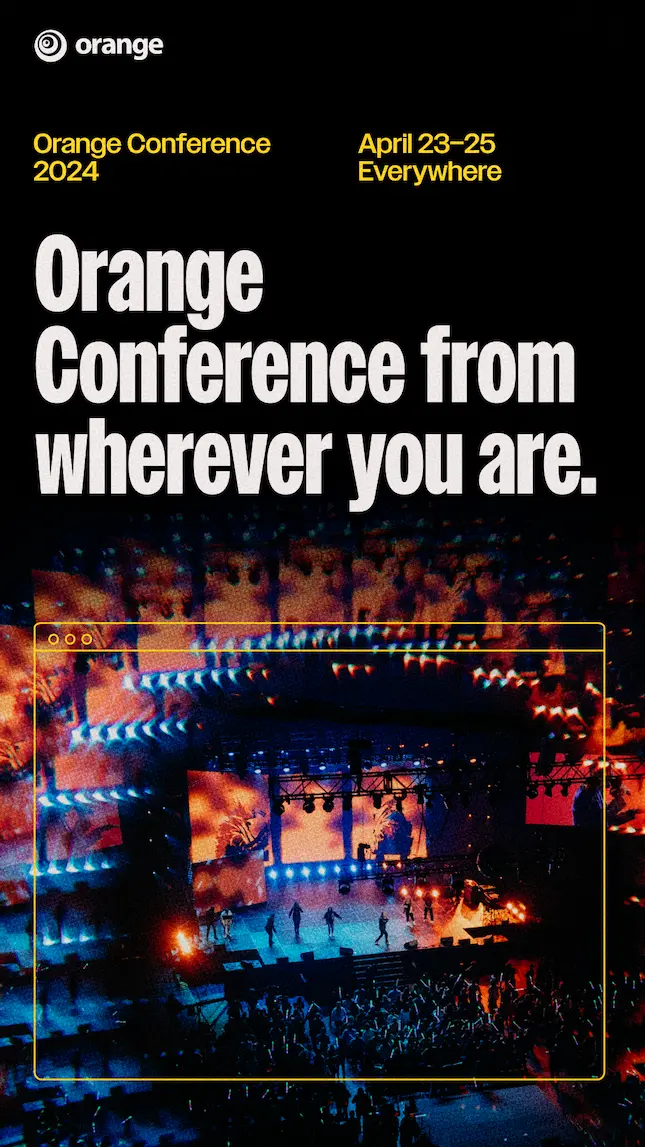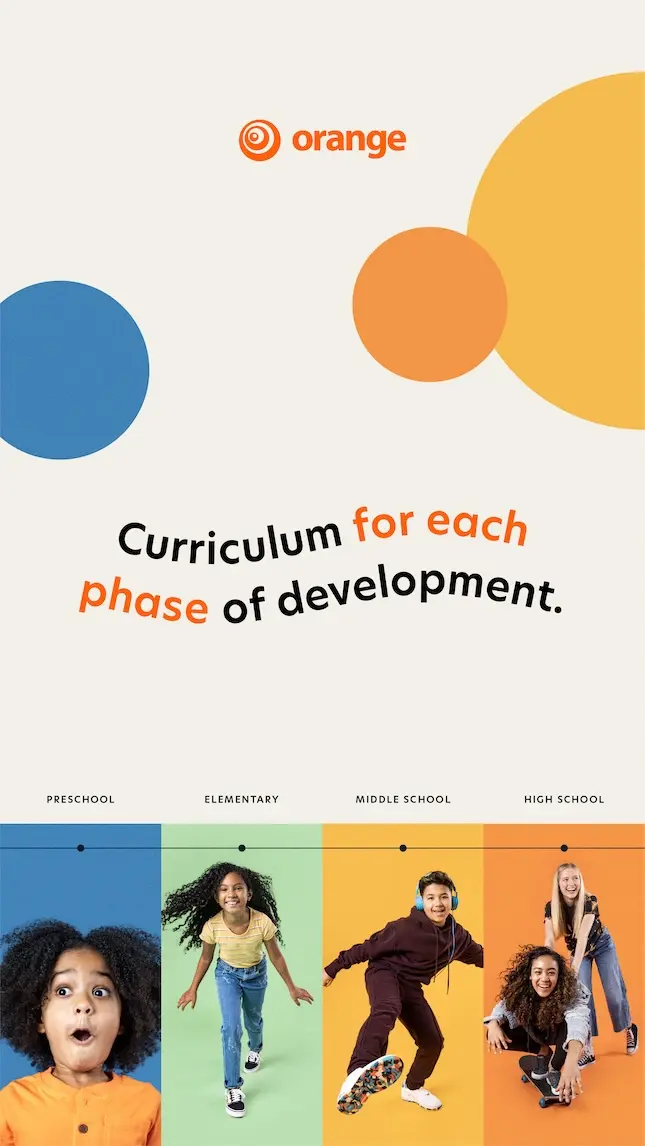If you’re in youth ministry, you’ve probably got a weekly program.
Now, think with me about your program for a second.
I bet every once a while, you sit in the back while the service unfolds and ask one question.
“Is this even working?”
I don’t know if we ever fully know that answer. And I certainly can’t tell you if your program is working.
. . . but, here’s what I’ve learned.
There’s a way to break down your program into seven different segments that will help you remove those unnecessary distractions and focus on what matters so that you can get closer to answering that big question…is this working? Or, more specifically, what’s not working?
By breaking it down into parts, by focusing on these smaller segments, you actually can start to improve specific areas of your program, because you’re not overwhelmed by the bigger picture. These segments help you figure out where to start, and how each element of your program fits together.
At Orange, we simply call these the Seven Segments. You can read all about them in the Orange strategy guide, Family Ministry Essentials.
We actually crafted our entire youth ministry curriculum around these segments, so that when you partner with XP3 Middle School or XP3 High School, you get more than just a message outline but a system and the tools level up every area of your program and ministry strategy.
The Seven Segments of Your Youth Ministry
Prelude
The first segment is the Prelude. This is what happens in your environment before your program even begins. It’s what students see, hear, smell, and feel. With XP3 Middle School and High School, we’re going to help you think through your Prelude so that a student’s first impression of your environment helps them feel welcome, safe, and like they belong. We do this in XP3 by providing things like Series Graphics, Motion Loop Videos, Recommended Playlists, Set Designs, a Series Preview Video, and a Ministry Leader Guide.
Social
The second segment of a great environment is the Social time. This is the part of your program where your students can connect and have some fun with each other and their small group leaders, because fun breaks down walls and makes relationships go deeper. Usually, we’re going to recommend you do this with a Game (which we provide, along with game slides).
Transitions
The third segment we want to talk about is your Transitions. With XP3, we give you tools like Bumper Videos and Series Graphics to help you move smoothly from one segment to another throughout your programming, because the smoother your transitions are, the fewer distractions your students will face.
Worship
The fourth segment is Worship, where students will have a chance to connect with God through music. To help you with this segment, we provide a Worship Leader Guide that includes a Recommended Worship Set List—a list of songs that are not only current, but also often thematically tied to the content you’ll be teaching. It also includes prompts, cues, song transitions, and pro tips for whoever might be leading worship for your group to better help them prepare to lead.
Story
Next, let’s talk about the fifth segment, which is your Story. This is your big, large group teaching time. Every message in XP3 curriculum is written with a middle schooler or high schooler in mind—how their brains work, how they learn, what their biggest needs and most pressing questions are, and, most importantly, what they need to know right now about the God who made them, who loves them, and has a plan for them. Then, everything—from the Teaching Outlines and Scripts to the Bottom Lines, Interactives, and Teaching Videos we create for each week of the curriculum—are created by a team of people who understand, and really like, middle schoolers and high schoolers. You’ll find all of that and more in each week’s Communicator Guide!
Small Groups
Small groups are a huge deal, not only for the XP3 team, but for Orange as a whole. Because we’re convinced that some truths are best processed in the context of relationships, and that students need adults (besides their parents) who can come alongside them to influence and care for them. Small groups, for us, are the point. They’re the thing, in our opinion, that everything else in your program should lead to. To help you do this well, we provide robust Small Group Guides, Small Group Leader Emails, and even weekly Small Group Leader Devotionals to help you leaders prepare.
Home
And then the seventh, and last, segment, is the Home segment. It’s what happens when a student walks out of our doors. We’ve already told you that small groups are a huge deal for us, but parents are, too. Even more than small group leaders, parents are the people who have the most influence in the lives of your middle schoolers and high schoolers. So if you want to influence students, you should influence the people who influence them, right? That’s why we’ve created a bunch of tools to help you better connect with, and cue, the parents of your students, with Student Social Media Plans, Parent Social Media Plans, and a unique resource we call a Parent Cue. We’ve also created a Daily Digital Devotional social media strategy and Daily Devotional (printable, take-home piece) to help your students engage in God’s work all week long!
So that’s it! Those are the 7 Segments and, as you start to take a look at XP3 curriculum, you’ll start to get familiar with them pretty quickly. Whether you use XP3 curriculum or not, thinking about how these 7 segments look in your ministry could be your first step to making those 1% changes that may make your program 100% better in the long run.



